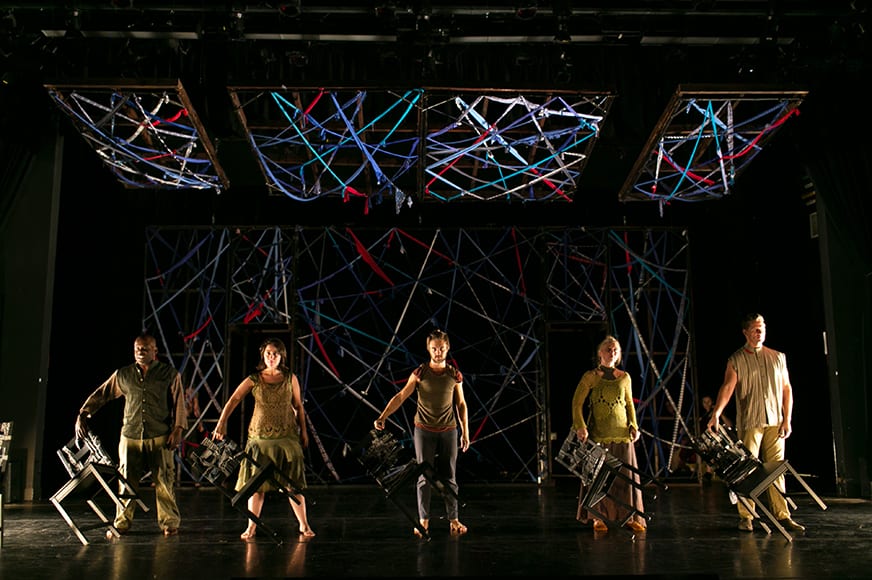
As a long-time Professor of Theatre Arts at LMU, Katharine Noon believes strongly in the importance of maintaining an active role in the theatre world outside of academia. Keeping current in the industry and developing relationships with outside companies allows her to connect her students to opportunities and internships, and better navigate the theatre world both in and out of school. This is one of the reasons why Noon serves as the artistic director for The Ghost Road Company, in addition to her duties as a full-time faculty member on campus.
Ghost Road, which Noon co-founded after her graduation from CalArts, produces original and innovative works with a collaborative approach. The company has traveled around the world, where they’ve performed with, learned from, and collaborated with other theater groups. The company’s most recently completed show, Asterion, is a reimagining of the myth of the minotaur. It was presented at the Getty Villa in 2016, and in October 2017 had its international debut in Poland at the Growski Institute.
The relationship between LMU faculty and the Growski Institute began in 2009, when Noon was invited to attend the Grotowski Festival in Wroclaw, Poland as part of a contingent of American theatre artists. Over the subsequent years, Noon forged a relationship with the Institute as they facilitated opportunities for her company to interact and work with various companies across Poland and to perform their work in Warsaw. In turn, Ghost Road has played host to various Polish Theatre artists on their tours to Los Angeles, including arranging for members of Studium Teatralne and Teatr ZAR to teach performance workshops at LMU to our Theatre Arts students.
Asterion follows the story of the Minotaur from Greek myth – a creature who is half bull and half man, a monster at odd with his monstrousness. Noon explains the conceptualization of Asterion, “We currently live in what seems to be a generation of increasing violence on both a global and local scale. We are bombarded with the news of horrific events on an hourly basis. In the past we created monsters to manifest and contain this violence, to put it outside ourselves into a myth or story, giving our world order,” she said. “Since World War I, many artists have continued to bring back the image of the Minotaur as a reflection of societal and personal violence. If we were to seek out this creature today where would he be and how would he reflect our current relationship to violence?”
This concept reflects the stated goal of LMU’s Theatre Arts Department, which focuses on how the study of theatre engages the whole person (body, mind and spirit), encouraging students to see their studies and their art in a broad social, ethical and cultural context. The piece, as all Ghost Road projects, was developed collaboratively – with input from each member of the company.
Noon also attributes much of her creative process to her students at LMU. “The greatest influence they have on my work with Ghost Road is their perception of the current state of the world and how they see their place in it,” she said. “It would be easy to get stuck in how someone of my generation sees society but being around students everyday helps me understand what the future is moving towards and how they are coping moving forward.”
Theatre Arts alumni have gone on to work with Noon in Ghost Road productions, often with instrumental roles in the development of the pieces, including Asterion. For Noon, this often leads to one of the most rewarding aspects of her work as a teacher. “By working with our Theatre Arts students after they graduate, I not only have the distinct pleasure of being able to guide these young talents through their educational process, but am able to witness and support their growth and maturation into working professional artists with focus, drive and true creative talent.”
Photos in the above slideshow are from the Getty Villa production of Asterion in 2016. Courtesy of Stephanie Fishbein



